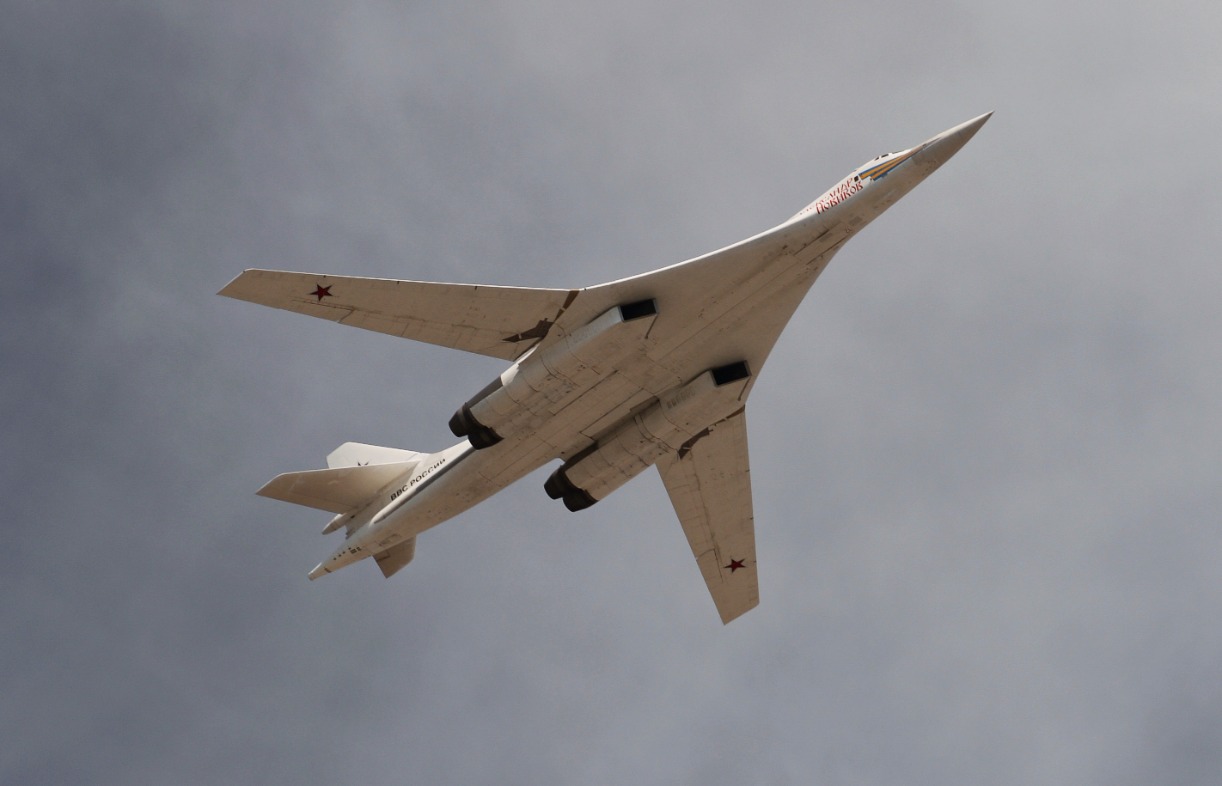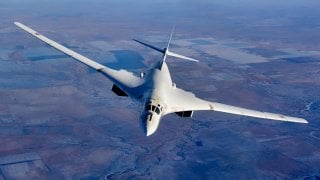Russia's 'New' Tu-160M Supersonic Bomber Can Fire 'Nuclear-Tipped' Cruise Missiles
Russia's Cold War-era Tupolev Tu-160 "White Swan" (NATO reporting name "Blackjack") remains the largest and heaviest Mach 2 aircraft ever to take to the skies.
Russia's Tu-160M White Swans Are More Deadly Warbirds - Russia's Cold War-era Tupolev Tu-160 "White Swan" (NATO reporting name "Blackjack") remains the largest and heaviest Mach 2 aircraft ever to take to the skies. Though it wasn't produced in significant numbers by the Soviet Union, Moscow announced in 2022 that it had plans to restart production of the bombers.
The new flock of White Swans could now be on the way, and the first Tu-160M built under the resumed production completed its factory tests some time back. The Kremlin has claimed that it will receive upwards of 50 aircraft – adding to the fleet of some 30 of the bombers. The upgraded Tu-160Ms are equipped with new onboard radio-electronic equipment, NK-32-02 engines, and other systems.
The Tu-160 was also designed to carry nuclear-tipped cruise missiles that can destroy targets in remote geographic areas and deep in the rear of continental theaters of operations. The Russian Defense Ministry also announced this month that the new aircraft will be outfitted with novel Kh-BD cruise missiles with a range surpassing 6,500 km (4,000 miles).
"[A bomber] carries a Kh-BD missile with a range of over 6,500 kilometers," Russia's Long-Range Aviation Commander Lieutenant General Sergey Kobylash said during a visit by Russian Defense Minister Sergey Shoigu and North Korean leader Kim Jong Un to the Knevichi airfield in Russia's Far East last September, per a report from Tass.
Minister Shoigu added that there are two clusters with six missiles each.
Tu-160 Bomber: A Response to the B-1
The Tu-160 White Swan was originally developed in response to the United States Air Force’s Rockwell B-1 Lancer bomber – and the Soviet-designed aircraft has a similar design.
However, whereas the B-1 is a bomber in the classical sense – meaning it flies to targets to deploy its bomb load – the Tu-160 was designed to operate as a stand-off weapons platform, where missiles are launched from bomb bay doors. After which, the White Swan could fly away at speeds of Mach 2+.
It lacks any defensive weapons and instead relies on its speed to evade enemy fighters or other interceptors – although in patrol missions, the White Swan is routinely escorted by fighter aircraft such as the MiG-31.
Cruise Missile Carrier
Some experts have been quick to downplay the capabilities of the White Swan as well as the Kh-BD cruise missile. One factor is that the Kremlin still has a limited number of Tu-160 bombers – and the Russian military never seems to actually acquire as many of its highly touted "game-changing" platforms as initially planned.
Another factor is how well a platform developed in the late 1970s and early 1980s will fare even with its fancy updates. The bomber still lacks stealth and has about the same level of defensive capabilities as an actual waterfowl, although the Kh-BD could be able to strike targets from extreme range.

Then there is the fact that Moscow had previously hyped its hypersonic air-launched Kinzhal ("Dagger") missile as unstoppable – yet Kyiv has claimed to have intercepted several with the U.S.-made Patriot air-defense system.

The upgrade Tu-160M shouldn't be easily dismissed, but it may be less of a deterrent or threat than the Kremlin had hoped it to be.
Peter Suciu: Author Experience and Expertise
Peter Suciu is a Michigan-based writer. He has contributed to more than four dozen magazines, newspapers, and websites with over 3,200 published pieces over a twenty-year career in journalism. He regularly writes about military hardware, firearms history, cybersecurity, politics, and international affairs. Peter is also a Contributing Writer for Forbes and Clearance Jobs. You can follow him on Twitter: @PeterSuciu. Email the author: [email protected].
All images are from Shutterstock.


